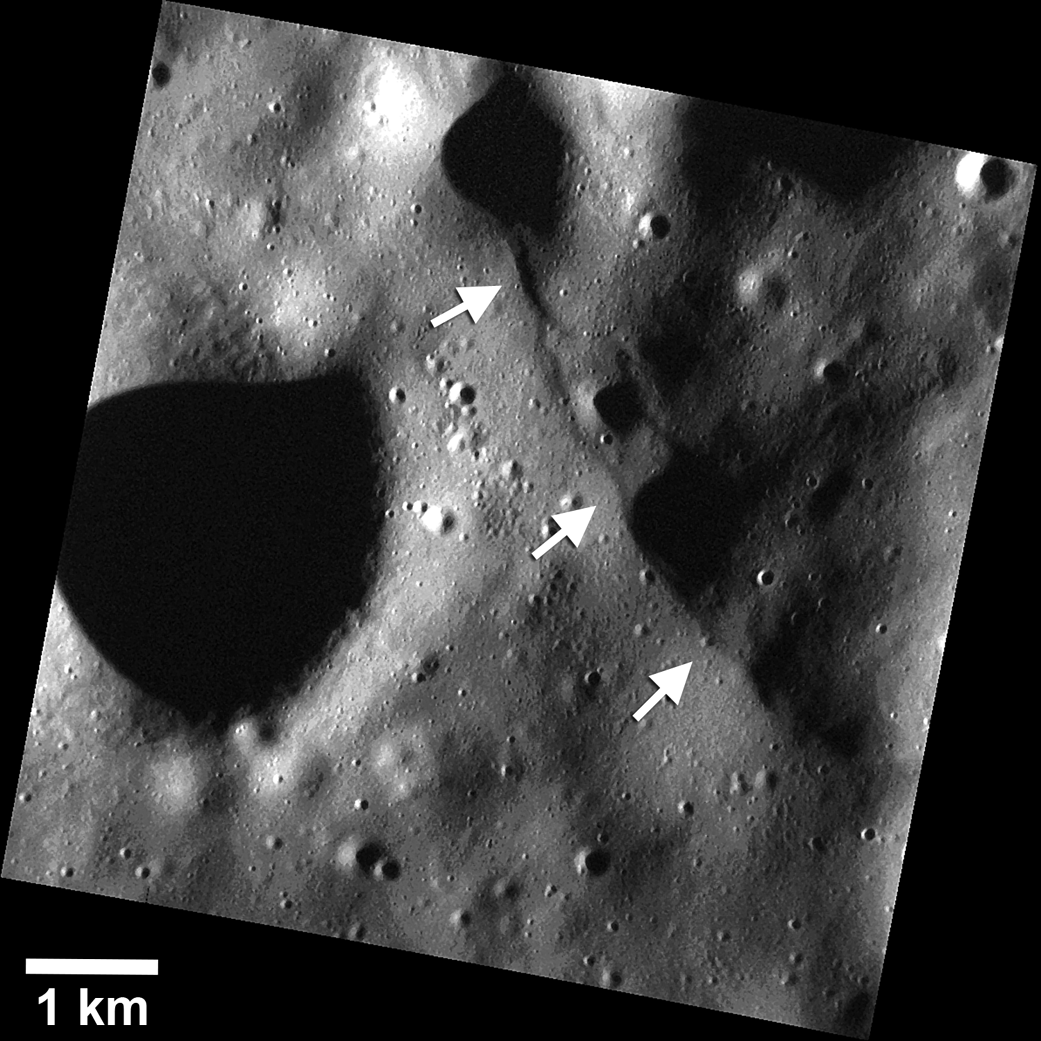Instrument: Narrow Angle Camera (NAC) of the Mercury Dual Imaging System (MDIS)Scale: Scale bar of 1 km provided on the imageCenter Latitude: 38.94°Center Longitude: 27.87° EOf Interest: Images obtained after lowering MESSENGER’s altitude have revealed a population of small fault scarps (white arrows) that can be more than an order of magnitude smaller in size than their larger counterparts, like Enterprise Rupes. These small scarps are less than 10 km in length and have only tens of meters of relief. They are comparable in size and morphology to small fault scarps imaged on the Moon by the Lunar Reconnaissance Orbiter, suggesting that these small scarps are relatively young, and raising the possibility that some are even active today! This image was presented at a press event at the Lunar and Planetary Science Conference. Visit the press event website to learn more! This image was acquired as part of the MDIS low-altitude imaging campaign. During MESSENGER’s second extended mission, the spacecraft makes a progressively closer approach to Mercury’s surface than at any previous point in the mission, enabling the acquisition of high-spatial-resolution data. For spacecraft altitudes below 350 kilometers, NAC images are acquired with pixel scales ranging from 20 meters to as little as 2 meters. The MESSENGER spacecraft is the first ever to orbit the planet Mercury, and the spacecraft’s seven scientific instruments and radio science investigation are unraveling the history and evolution of the Solar System’s innermost planet. In the mission’s more than three years of orbital operations, MESSENGER has acquired over 250,000 images and extensive other data sets. MESSENGER is capable of continuing orbital operations until early 2015.
Credit: NASA/Johns Hopkins University Applied Physics Laboratory/Carnegie Institution of Washington
2 min read



























